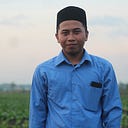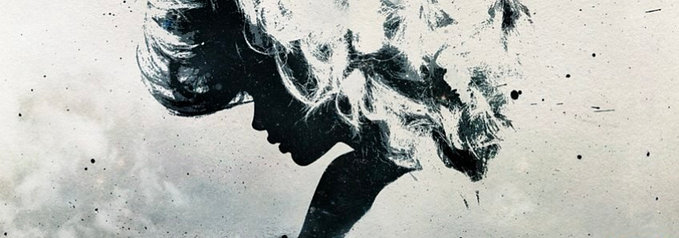Religion and Javanese Culture

Religion is something that comes from God to be a guidance for mankind to achieve world prosperity and happiness hereafter. The cultures are all products of human intellectual activity for the welfare and happiness of earthly life. The style and color are influenced by religious and cultural understanding of religion otherwise affected by the level of culture.
Islam is just one, but not a single Islamic culture. So many and varied according to the objective conditions of space and time, according to the place and time of the creator and developer culture.The tendency to modify Islam with Javanese culture has spawned a wide range of new products, especially on the interrelation of the Javanese Islam with the beliefs and rituals of Java.
In the context of Indonesia, Javanese culture is one of the local culture is important because it affects the part of the largest ethnic in Indonesia. Islamic values have significance for Javanese culture as the majority of Javanese religion and embrace Islam.Thus the relations with the Islamic values of Javanese culture becomes interesting because of the existence of Islam and Javanese culture that is dominant in the nation of Indonesia.
Understanding of The Culture and Java
For ease of understanding in this discussion, we divide the two subjects, namely cultural and Java. Where two words have different meaning and understanding. As in KBBI word culture means something that has become a habit. In contrast to the notion of culture are the things that concerned with mind and reason.
In greater detail Koentjoroningrat cultural divide into elements consisting of religious and ritual systems, systems and community organizations, knowledge systems, languages, art, livelihood systems and technology systems and equipment.
While the geological understanding of Java is part of an old geological formations of the mountains that connect with a row of mountains in the Himalayas and Southeast Asia, where the direction of swing to the southeast and then eastward through the edges of the Sunda plateau which is the foundation of the Indonesian archipelago, which has an area of 7% of the entire population of Indonesia.
While the so-called Java man by Frans Magnis Sweno SJ. Is “the person whose native language is Java, which is a native of central and eastern Java island Java language “. Because in Java itself uses four languages, namely Malay natives used Betawi Jakarta, Madura Sundanese of West Java’s population used the center and south, Madura language used by residents of East Java and some variants of the northern part of the Java language Cirebon, Surabaya, Kediri, and Madison are a little different.
So from the above description, we can take an understanding that Javanese culture is referred to here is all the norms and value systems which include systems of knowledge, beliefs, morals, art, law, customs, language, social organization, livelihood, technology and custom equipment and the ability to live on the island of Java and the Java community.
The Characteristic of Javanese Culture
Society is a unity that bound by the norms of life because of the history, traditions, and religion. It can be seen in characteristic Javanese society is kinship.
System family living in Java Java community is reflected in the kinship. There is a term used to refer to the same ancestor, either at the third level and third-generation progeny, with me as a reference. So, great-grandfather means father, and his grandchildren, and so on (wareng, udeg-udeg, hanging siwur, gropak sente, debog bosok) until the tenth generation galih tamarind which can show both ancestors and descendants far.
In Java, the children are raised by the brothers, their parents, even by neighbors, and children are often raised. Customary law requires each person responsible for the family man and is still required to work helping other relatives in terms of certain things such as working on the farm, build houses, repair of village roads, cleaning up the environment and other burial motto saiyeg saeka Praya or mutual aid is a series of please help your fellow citizens live. Culture that they build is the result of natural adaptation so as to lay a solid foundation and fundamental Panembayatan. Processing of agricultural land held until harvest time worked together, helping each other. It is still true today in the deliberation system Rembug indigenous village called Village.Cultural value, either directly or indirectly of course colored by the actions of people and cultural products that are material.
Culture Javanese Society Pra Hindu-Budha
Indonesia, especially Java community before coming influence of Buddhist Hindu religion has a regular arrangement society as a society that is still simple, natural to look in the animistic religious system is the core cultural dynamism that characterizes the whole activity of life of its people.
Another feature of the Java community is berketuhanan. Java prehistoric tribes since prehistoric times has had animism, a belief about the existence of a spirit or soul in objects, plants, animals, and also the man himself. Such confidence is the first of their religion. All the moves are considered live and have a supernatural power or have a bad spirit and good character. There are spirits of the most powerful and stronger than humans. And to avoid the spirit of worship with the way they held a ceremony accompanied by offerings.
Funeral was held the following sequence. Slametan surtanah or geblak held at the time of death of a person; slametan nelung dino, slametan mitung dina, slametan matang puluh dina, slametan nyatus, slametan mendak sepisan, mendak Pindo, slametan nyewu, slametan nguwis-uwisi.
Giving offerings or offerings kanggo sing mbahu Rekso, danyang or mbahe who live in banyan trees or large trees and its old,in sendang-sendang or belik, where springs, the old graves of famous figures in the past or other places considered sacred and contain supernatural powers or armature and wingit or dangerous. Javanese calendar make us impressed by the diversity of a codified it. Dating system based on the day which in principle is based on a blend of three weeks, each called pancawara / market, sadwara, and saptawara.
Name the days pancawara and sadwara all from Java, which is Pahing, pound, wage, Kliwon, and legi. Name days are tungle sadwara, ariang, wurukung, paning rong, uwas, and mawulu. In Bali is still so, and which is now derived from the Arabic ahad, Monday, Tuesday, Wednesday, Thursday, jemuwah, and Setu.
As the remnants of the past is a religious act by attempting to increase the inner strength that can affect the strength of the universe or the jagad gede. This is done so that all the natural forces that will affect the lives of themselves and their families can be defeated.
This effort reached by road behavior are prihatin or feel sore at the way the inner bolsters prevent your opponent dahar, mutih, ngasrep, and fasting on these days wetonan or days of birth. The most serious business is done starch geni. Attempts to increase the power of the mind itself has also been conducted by using magical objects or supernatural force called talisman,, which is a dagger, spear, Songsong Jene, agate, tiger nail root and bahar. The act of religious belief is a remnant from the time of dynamism.
Javanese Culture and Hindu-Buddhist Beliefs
History records that menjawa experienced “first mutation” AAU is more accurately called Indianization. Actually, the possible influence of India was never detected by the researchers of Europe before the beginning of the 19th century. Raffles raised Indianization be an interesting topic with a link between Java and India. There are at least three clues for appreciating how cultural contiguity, which has permeated the mentality of the people of Java.
First, the ethnic origins of Java described by CC berg in the form of a legend about a man named Aji Saka. He told the young son of a Brahmin who comes from the land of India. Aji Saka comes lands of Java, and get a country with medangkamulan name, which is now in areas grobokan, Purwodadi. According to the legend that a CC Berg used the symbolism of the ancestors of the Javanese to facilitate the calculation of the initial memory Javanese chronicle, the chronicle saka. This preceded the collapse of confidence in a matter of animism because of the influence of Hindu Java.
Second, the interpretation indidanisasi others, who are less historical java script is given in the 16th century, which is similar panggelaran Tantu user Hindu hermitages in Java. The article explains the origin of Lord (Siva).
Third, following the theory of mutation should be noted that many names are derived from the island of Java Sanskrit, which proves the existence of the will to recreate the geography of India which is considered sacred. Not only mountains, but also the kingdoms whose name was borrowed from the Mahabharata. Similarly Borobudur reliefs can not be interpreted without knowing the Indian treatise on the Mahayana. However, it is possible between both the Java and India is similar.










